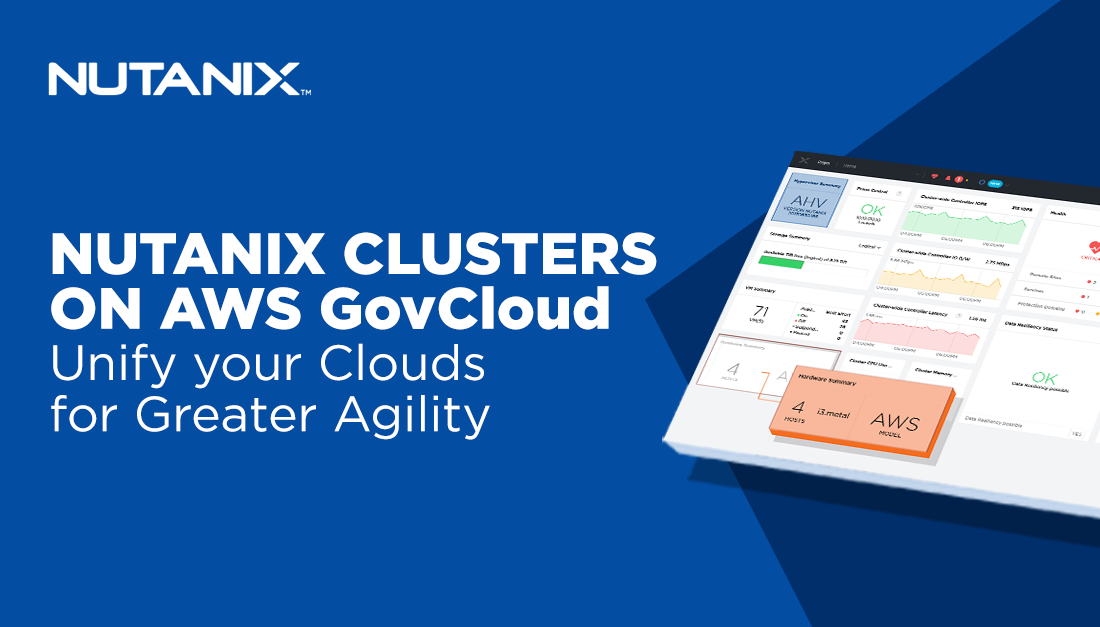
In this age of imperative digital innovation, the announcement that Nutanix Clusters cloud platform now supports the Amazon Web Services (AWS) GovCloud (US) region is a welcome choice for government customers. Nutanix Clusters is a component of the Nutanix Government Cloud Services, which has a FedRAMP authorization at the Moderate security impact level. Government agencies implementing Cloud Smart mandates can now consider another option to securely and seamlessly move their on-premises applications, sensitive data and regulated IT workloads to the cloud, and take advantage of rich cloud services. A built-in native integration with AWS networking makes the initial set-up very easy, allowing government IT teams to typically provision a hybrid cloud environment in less than an hour.
The case for using cloud capabilities in government has been clearly proven – to improve the quality and access of government services to its population; deliver mission-serving applications and services faster; support disaster recovery for critical applications; better secure sensitive systems and data; and drive operational efficiencies and cost savings.
A common question is how best to evolve existing IT environments? Customers have seen a blur of choices as well as overwhelming complexity in evaluating offerings. There is urgency in the government to move workloads to the cloud, and customers tell us it often feels like a “race to win”.
Nutanix Clusters - Manage all of your clouds as a single cloud
In August 2020, we announced the general availability of the Nutanix Clusters platform on AWS, which enables customers to extend data center capabilities natively into AWS public clouds (typically within one hour). This hybrid cloud solution manages applications and infrastructure in private and public clouds as a single cloud, greatly simplifying the IT environment. In addition, customers can choose the optimal cloud environment for each application based on their service or mission needs. After successfully deploying Nutanix Clusters in commercial AWS regions, Nutanix addressed the additional government requirements and has now announced its general availability on AWS GovCloud which is a component of the Nutanix Government Cloud Services.
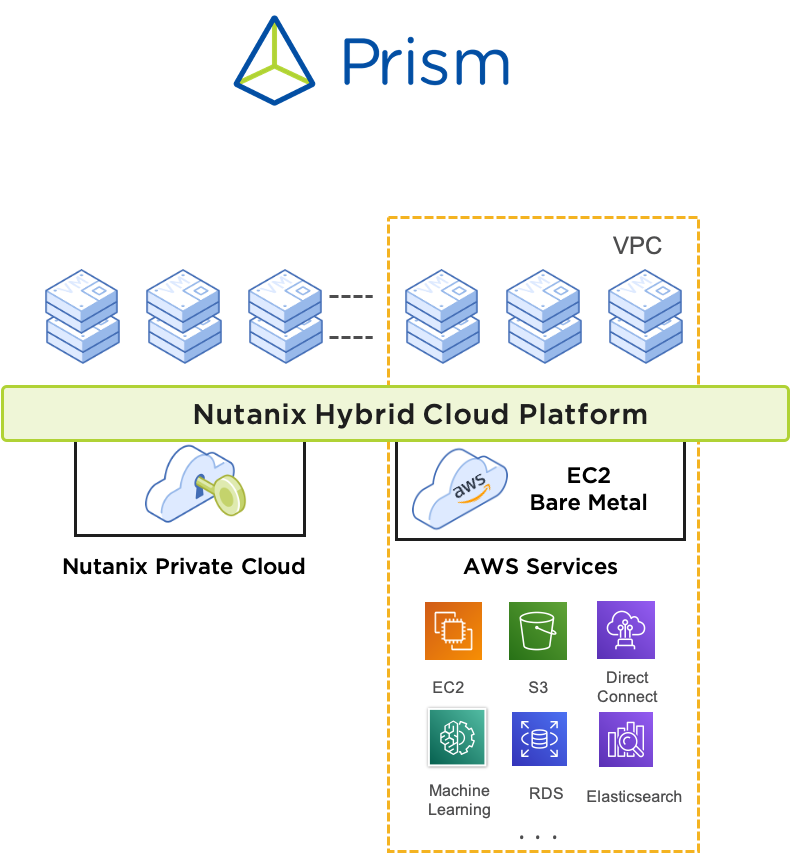
Fig 1: Nutanix Clusters: Hybrid Cloud Infrastructure with AWS
Nutanix Clusters runs the core Nutanix hyperconverged infrastructure software stack (including Nutanix AOS, AHV and Prism software) and supports multiple Nutanix products and services on bare metal AWS EC2 instances with support for the following instance types (subject to regional availability):
- i3.metal
- i3en.metal
- m5d.metal
- z1d.metal
Nutanix Clusters simplifies infrastructure and seamlessly migrates or extends any virtualized application across platforms – all under a single management console. This single user interface manages license portability across both private and all public cloud environments, eliminating the need for separate teams to manage each environment. This is great news for government IT teams struggling with limited resources and skill sets.
The recent Nutanix Enterprise Cloud Index study shows 87% of U.S. Federal respondents identify a hybrid cloud model of private and public clouds as the ideal IT operating environment for their organization. However, adoption has been slow with only 14% of respondents currently running a hybrid cloud environment. This is not surprising as many of these organizations are struggling with transitioning legacy and mission critical applications to cloud environments. This solution will help government agencies accelerate their journey to hybrid cloud, improving operations and performance.
Cloud Solution Choices: Managed Services Versus Direct Management Control
When evaluating hybrid cloud solutions, most options typically require government agencies to enter into a vendor managed services contract on top of a cloud service provider. These options often present constraints around scope of management control, visibility into issue resolution, license portability from on-prem to public cloud and lack of direct billing with public cloud.
Nutanix Clusters on AWS GovCloud is a simple extension of your on-premise hyperconverged infrastructure to AWS GovCloud, which reduces the inherent complexity of delivering a consistent experience across your datacenter and AWS GovCloud. With Nutanix Clusters on AWS GovCloud, you directly manage your AWS GovCloud environment as you would any other datacenter, without the additional costs and limitations of a managed service. As your requirements change, you can easily shift software license entitlements from on-premise nodes to bare metal AWS EC2 instances without being locked into perpetual licensing. Unlike managed services where you are paying the 3rd party vendor for consumption of the entire solution, Nutanix Clusters (including Nutanix Clusters on AWS GovCloud) allows you to leverage your existing AWS accounts, contracts, discount structure, consumption and billing model. This provides greater control of the hybrid cloud infrastructure as well as more flexibility when migrating apps to AWS.
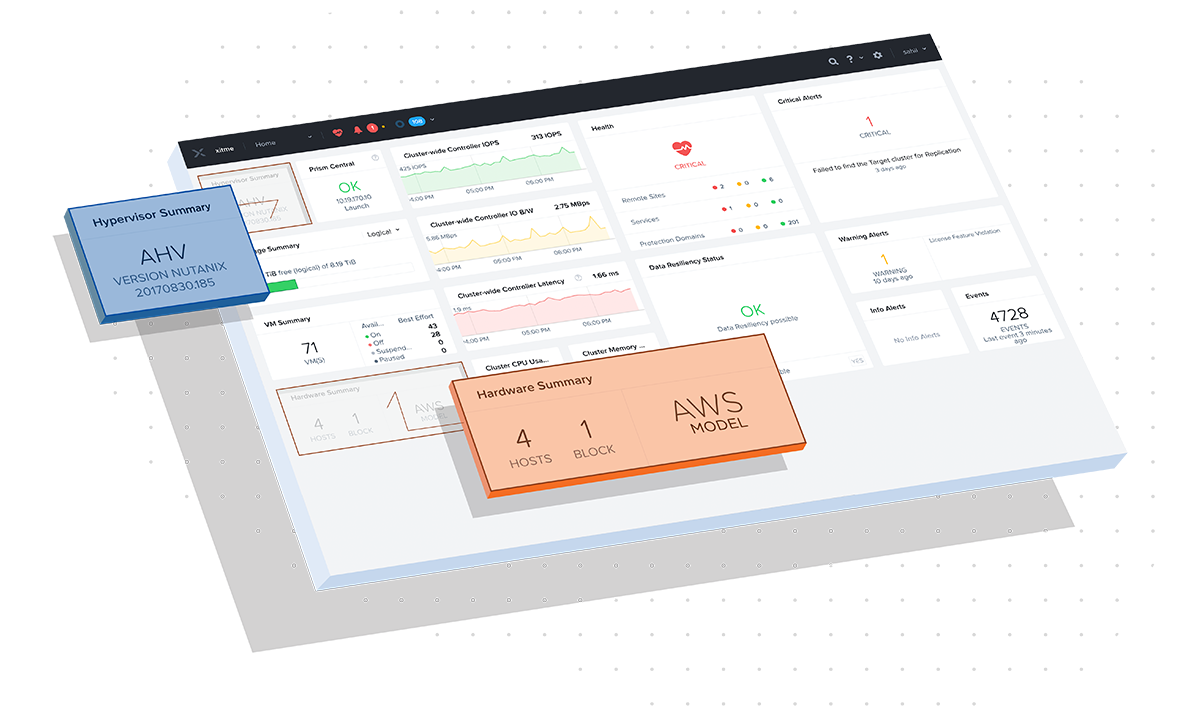
Fig2: Nutanix Clusters gives YOU the control and delivers YOUR Nutanix software in YOUR AWS GovCloud account
AWS GovCloud Meets Regulatory Requirements for US Government
Nutanix Clusters on AWS GovCloud provides an important choice for Federal government customers who want to increase their AWS adoption while maintaining the freedom that a hybrid environment provides between their datacenter and public cloud.
AWS GovCloud (US) is an isolated region designed to allow U.S government agencies to move their confidential data into the cloud to address their compliance and specific regulatory requirements.
Security Matters: FedRAMP-authorized Nutanix Government Cloud Services
The Federal Risk and Authorization Management Program (FedRAMP) provides a standardized security framework for cloud products and services that are recognized by all executive branch federal agencies. Nutanix Government Cloud Services has successfully completed a full security assessment and authorization at a moderate security impact level of 325 controls. The FedRAMP Moderate control baseline equates to a DoD Impact Level 2.
The Nutanix Government Cloud Services are inclusive of other components enabling government customers to optimize their cloud spending, improve their security posture and support remote teleworkers.
- Flow Security Central (a centralized SaaS-based management plane) delivers compliance monitoring, network visibility, and security operations across both Nutanix and public cloud environments, including AWS GovCloud.
- Xi Beam cost governance solution provides significant cost savings to customers through increased visibility and cost recommendations on their cloud spend by right sizing their infrastructure, optimizing purchase plans and automating manual tasks.
- Xi Frame is a cloud Desktop as a Service (DaaS) and cloud orchestration platform with security and compliance built in to meet the needs of the public sector. This solution allows federal agencies to support and expand telework capabilities for personnel across a variety of external networks.
Common Government Use Cases
Whether increasing capacity for Virtual Desktop Infrastructure (VDI) deployments, leveraging cloud capacity for disaster recovery to help ensure operations, or increasing developer productivity with a parallel dev/test workstream, government customers can seamlessly extend their Nutanix environments to AWS GovCloud and scale as needed. In working with our government customers, we find these typical key use cases:
- On-Demand Elasticity. Government agencies often work with extremely time-sensitive information, and it is vital to be able to quickly scale capacity by bursting into public clouds to support the mission and service needs.
- Disaster Recovery. Government agencies can leverage public clouds for high availability and continuity of operations, avoiding the complexity and cost from managing a secondary datacenter.
Penn National had been backing up everything to tapes and storing them offsite. If they ever had a disaster, it would have taken several days before all their systems were back online. Nutanix Clusters enabled them to complete all the testing for the AWS deployment in one day. They linked their on-prem data protection Cluster with their rapid recovery Nutanix Cluster on AWS, and in less than two hours, the desktops were on AWS. By scaling out their virtual desktop infrastructure into a Nutanix Cluster on AWS, Penn National was able to discontinue the expense of a secondary site, freeing up budget to be used for strategic initiatives.
- Modernize Applications. Government agencies can lift-and-shift virtualized applications to the cloud without having to re-architect them. Nutanix Clusters decouples applications from the underlying platform, so you have the freedom to run either on-prem or in AWS based on service and mission needs.
- Access innovation. Government customers can access a rich array of cloud-native services such as artificial intelligence, machine learning and more. This can usher in a new era of cooperation and collaboration, allowing authorized agencies to share information and services much more easily. This is a core strategy to help authorized agencies to discover, access and share critical information in an era of infinite data.
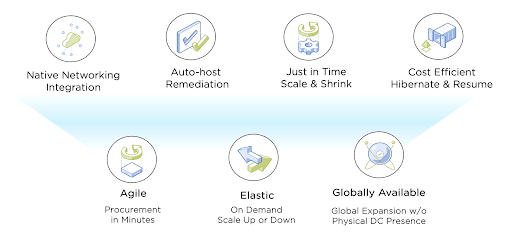
Fig3: Key Features of Nutanix Clusters on AWS GovCloud
Key Features
Nutanix Clusters on AWS GovCloud has important features that support performance and availability, while minimizing cost. These include:
- Native networking integration, as government customers can run all their Nutanix software in AWS GovCloud without any networking overlay complexity. Customers can re-use their existing AWS networking set-up, AWS accounts, VPCs, and subnets.
- Rack awareness and auto host remediation, as the solution intelligently picks the node placement across AWS GovCloud racks to ensure highly availability. If any individual AWS GovCloud host instance is reported as unresponsive by EC2, Nutanix Clusters will trigger a node replacement to make sure the cluster health is restored. Even if a full AWS GovCloud rack goes down, Nutanix Clusterrs will gracefully restore the cluster back to full health.
- Just-in-time scale and shrink: as government customers can easily add new compute nodes when they need more capacity. It is easy to manually add nodes or expand the size of the cluster with one-click, or customers can use playbooks with triggers based on capacity consumption to scale out nodes automatically.
- On-Demand Hibernate and Resume, as government customers can control their costs. The hibernation feature sends data to cost-efficient S3 storage, uninstalls your Nutanix software and stops the EC2 bare metal instances so that you can stop incurring bare metal compute costs, when you don’t need them. When you are ready to use your cluster again, you can bring it back from hibernation with just one-click and all your data is preserved. (This feature is currently in tech preview).
Insider Tips to Advance Your Success
Our experts working with government customers in the trenches have these three insider tips:
- Networking is one of, if not the most complex piece of implementing hybrid cloud. Make sure you have an understanding of your network and proposed hybrid cloud architecture before starting your project.
- Security is a shared responsibility in the cloud. FedRAMP authorization means that not all security is handled by the vendor or the cloud provider. Make sure to plan for security in the cloud and adopt vendor solutions that help cover the burden of security by providing built-in security items like pre-hardened STIGs.
- Data egress from the cloud is expensive, so it is imperative that government IT teams plan an architecture where services exchanging data are co-located (either in the public cloud or on-prem), and use replication technologies that only send delta changes back to on-prem to minimize data egress cost.
Government Can Simplify Cloud Adoption in One Hour With Nutanix Clusters
We know Federal agencies are looking for solutions to help them implement their Cloud Smart strategies, but existing offerings lack the necessary security or are cumbersome to deploy and manage,” said Chip George, VP Public Sector of U.S. Sales at Nutanix. “Nutanix Clusters on AWS GovCloud enables organizations to significantly accelerate their cloud adoption, without needing to re-architect mission critical applications that are necessary to the agency's operations and mission, providing an easy path to a unified hybrid cloud environment.
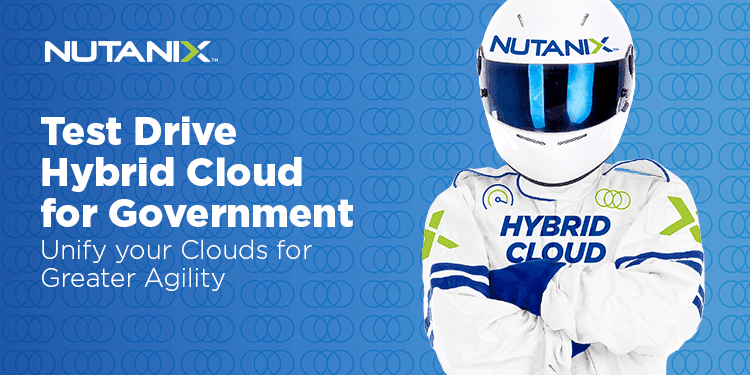
Your next steps:
- Test Drive the Nutanix Clusters solution on AWS GovCloud through your web browser – a self-guided showing you how to use Clusters to establish hybrid connectivity and easily migrate applications from on-prem to AWS.
- Contact us to get a demo and set-up a free trial. You can use your existing AWS account with access to EC2 bare metal instances and establish hybrid connectivity between Nutanix on-premises and Nutanix on AWS GovCloud.
We welcome your feedback and look forward to accelerating your hybrid cloud journey!
© 2021 Nutanix, Inc. All rights reserved. Nutanix, the Nutanix logo and the other Nutanix products and features mentioned on this post are registered trademarks or trademarks of Nutanix, Inc. in the United States and other countries. Other brand names mentioned on this post are for identification purposes only and may be the trademarks of their respective holder(s). This post may contain links to external websites that are not part of Nutanix.com. Nutanix does not control these sites and disclaims all responsibility for the content or accuracy of any external site. Certain information contained in this post may relate to or be based on studies, publications, surveys and other data obtained from third-party sources and our own internal estimates and research. While we believe these third-party studies, publications, surveys and other data are reliable as of the date of this post, they have not independently verified, and we make no representation as to the adequacy, fairness, accuracy, or completeness of any information obtained from third-party sources.